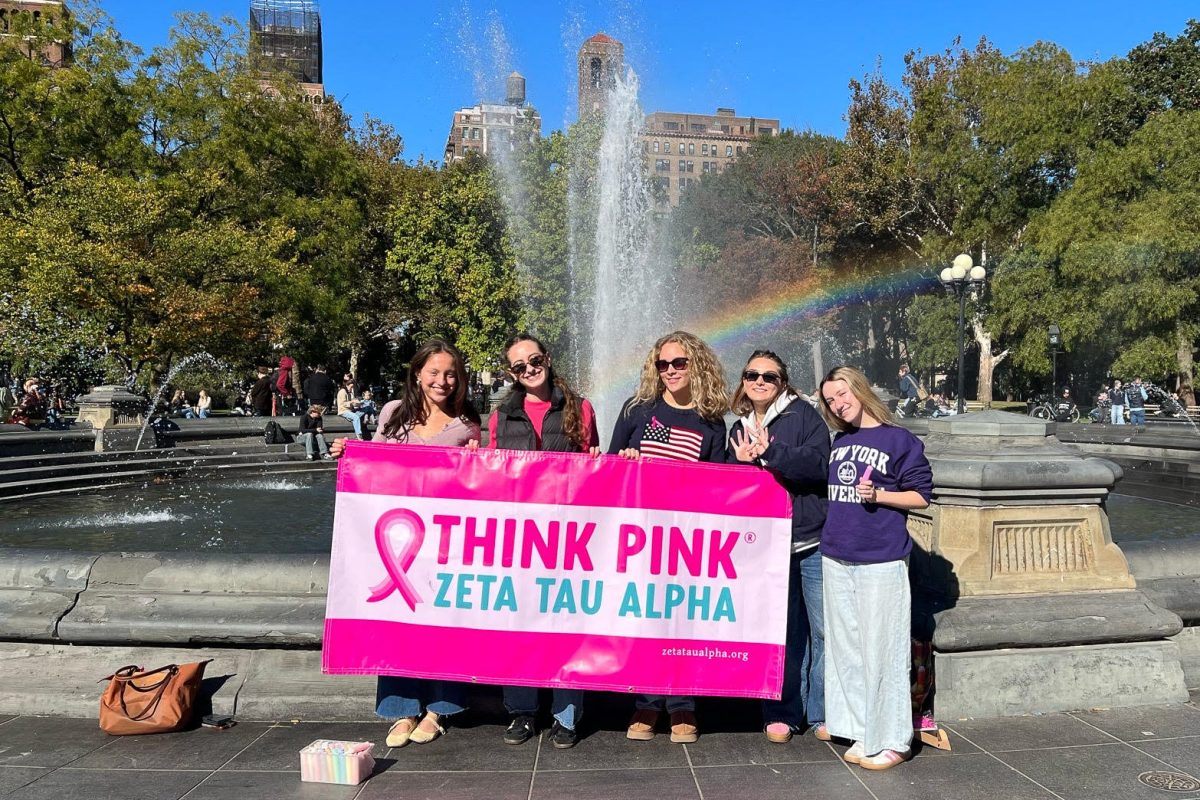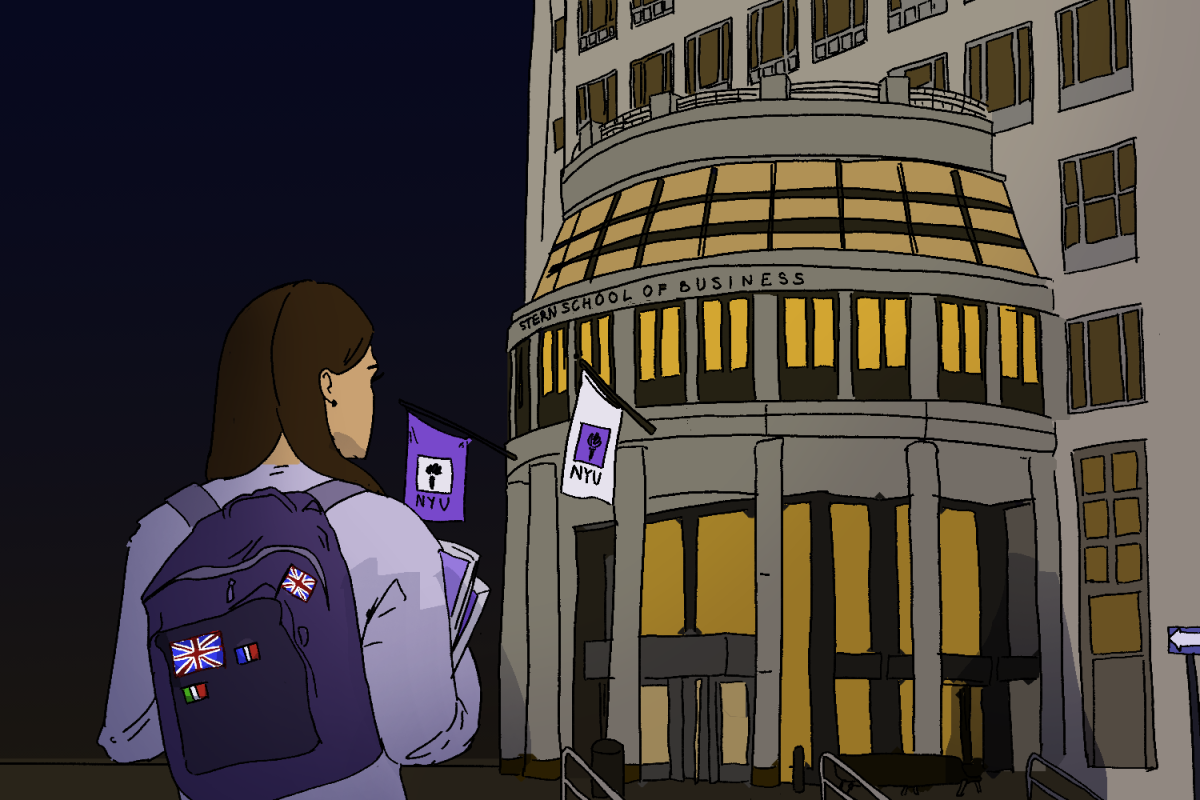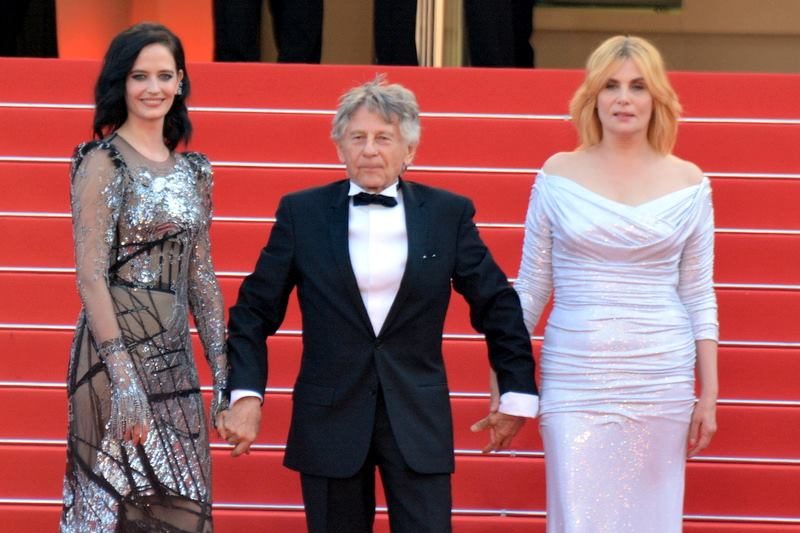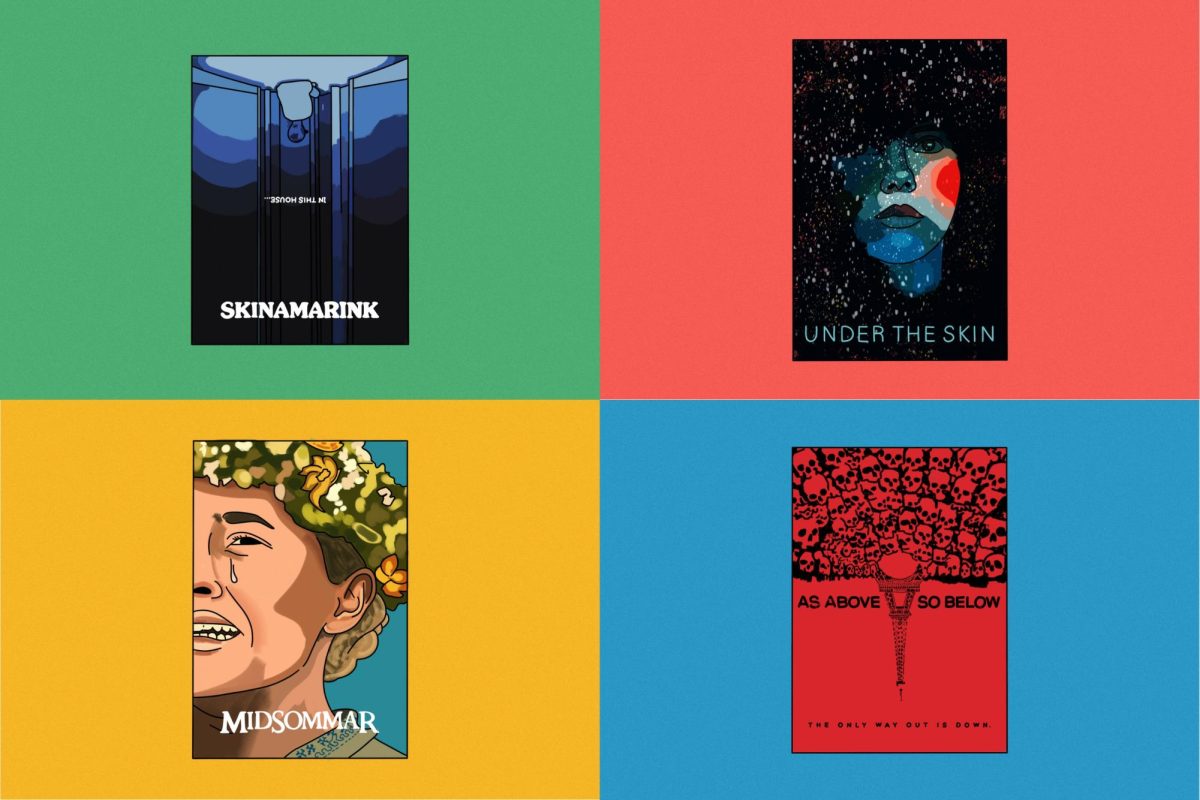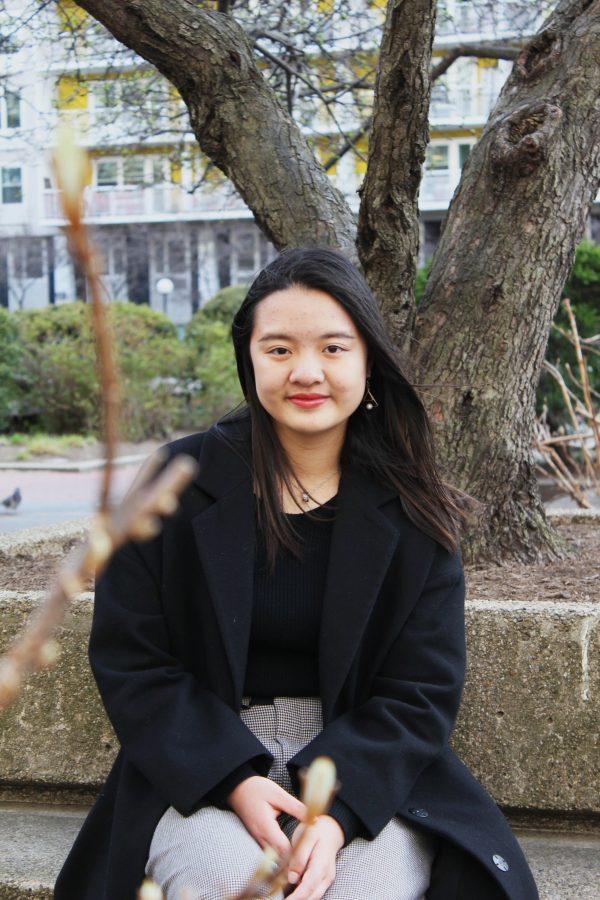Twenty-one-year-old singer and songwriter Leah Dou has an international fan base — and a face tattoo. While the design is simple — a single line running from her lower lip down her neck — the influence it has can be seen on social media networks like Instagram and Weibo, a Chinese microblogging platform. Fans get tattoos inspired by Dou’s body ink, often replicating the design exactly. Whether it’s an intricate face tattoo or a minimalist ankle tattoo, celebrities and westernized popular culture in modern China have contributed to dampening some of the stigma around inking, allowing those who feel trapped within the boundaries of traditional views to express themselves.
For most of Chinese history, tattoos have been stigmatized. In classical Chinese literature, they were associated with bandits and gangsters, marked as a form of punishment. Even so, minority groups such as the Dulong have a long tradition of tattooing that dates back to the Ming Dynasty.
But not everyone is embracing China’s evolving cultural landscape. Last year, the Chinese government issued a television ban on tattooed celebrities and hip-hop culture. Prominent tattooed Chinese rappers including GAI and VaVa were removed from competitions and variety shows without official explanations.
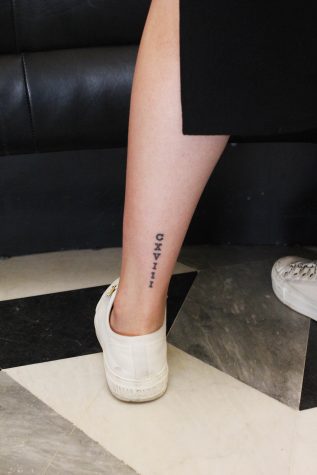
While older generations continue to look down upon tattoos, younger generations more readily accept them. In the recent decade, larger cities like Beijing have experienced an increase in tattoo artists. SPS junior Charlene Ren was born in Zhejiang before moving to Shanghai at the age of five. She still pays regular visits to the metropolis and during one summer trip, she accompanied her friend who was getting a tattoo in the city.
“I was pretty surprised because I thought it would be pretty sketchy but it was clean, organized and very professional,” Ren said. “I think it’s getting an industry in Shanghai.”
Shanghai has been dubbed China’s tattoo mecca, with an estimated 2,000 tattoo artists in 2015. Just as Western artists draw from Eastern symbols and imagery, Chinese artists promote designs ranging from dragons and Tsingtao beer bottles to names of American heavy metal bands.
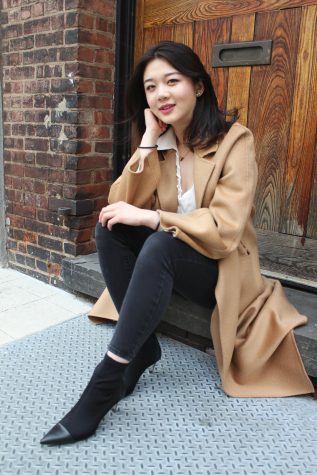
Ren stared off into the distance and paused for a moment as she recalled the specific regulations prohibiting tattoos when she worked at a luxury hotel in Shanghai during the summer. Though tattoos are frowned upon on paper, the public eye has slowly become more tolerant of them.
“The handbook said you couldn’t have a tattoo,” Ren said. “But at the workplace, you still see the bartender with a tattoo. I feel like they’ll write it as a restriction but no one really cares.”
Still, many Chinese workplaces forbid body ink. Born in Qingdao, China, Tandon junior Sherry Fu moved to Los Angeles as a teenager. She discovered a stark difference in what is seen as normal in the U.S. and where she grew up.
“If you have a blue-collar or higher job, tattoos are absolutely prohibited in workplaces,” she said. “Even Chinese dating platforms often have a line saying ‘no drinking, no smoking, and no tattoos.’”

The interplay between Eastern and Western culture is strongly represented through Chinese tattoo artists overseas. New York’s Chinatown is home to the highest population of Chinese people in the Western Hemisphere, and it includes a community of Chinese American tattooists who have established a balance between their two cultures.
Jason Lu is a 25-year-old tattoo artist who works at Mischief Tattoo in Greenwich Village and Blindreason Tattoo near Little Italy. Lu grew up in Brooklyn and moved to Flushing when he was 11. There, he made friends with other Asian Americans.
Lu observed his friends getting tattoos, which initially led him to start his tattoo career. “My friend got an elephant tattoo for $60 and I thought I could definitely do better,” Lu said. “It was just a hunch.”
Lu decided to find an apprenticeship at DragonFly3, a local tattoo shop on Jamaica Avenue where he paid $3,000 and ended up teaching himself more than anything else.
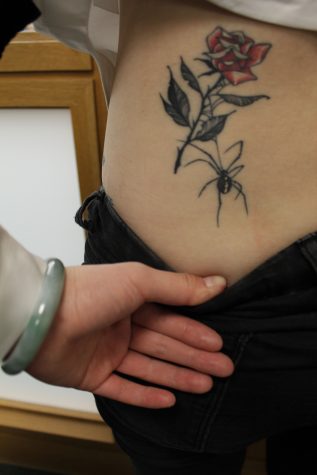
“[At first] I didn’t even think about drawing as a serious option,” he said. “You know, as an Asian, you gotta be a doctor.”
Those who deviate from the expectations of many traditional Asian families on entering lucrative professions are labeled as scandalous and rebellious. It’s arguably even more difficult for Asian women.
Jessica Ti-fan Chiang is a 29-year-old tattoo artist who also works at Mischief Tattoo. Despite her average stature, her characteristic black winged eyeliner and statement accessories express her strong personality. Chiang grew up in a small town in New Jersey. She was raised by a Taiwanese father and Japanese mother, and the multi-ethnic family allowed her to be immersed in different cultures at a young age.
Chiang cultivated her interest in tattoos by working as a shop assistant at Infinity Tattoo in Times Square. Like many other artists, she was a shop assistant for about 3 years before she started to take tattooing seriously.

“I’ve always been a black sheep, even in my immediate family,” she said. “I got my first tattoo when I was 14 and managed to hide it from my parents for a while.”
Her parents eventually found out and were angry, but Chiang did not stop getting tattoos. She believes her family’s initial displeasure to be representative of the cultural tension that Chinese Americans face.
“Tattoo traditions have been absorbed and suppressed through government banishments,” she said. “Owing to that, tattoos are seen as something unnecessary. On the contrary, there’s a lot of indigenous tattoo tribes in Yunnan and Taiwan.”

SPS junior Jasmine Zhang was born in the U.S. and grew up in China before moving to the East Coast. Zhang’s mother shared a similar sentiment when Zhang brought up the topic.
“She said, ‘I gave you this body so you shouldn’t be harming the body I gave you,’” Zhang said.
For others, cultural background plays a more indirect role in influencing opinions about tattoos. Sherry Fu would never get a tattoo on a body part that would be visible on a daily basis. Fu is worried that her Chinese relatives would be critical if she did so. She didn’t reveal her first tattoo to her family until half a year after she got her second one.
“Before I got any tattoos, [my mother] told me jokingly that she would ‘Cut that piece of skin off’ if I get a tattoo,” Fu said. “But she didn’t even yell at me after she found out about them.”
Jason Lu had a similar experience breaking the news to his family. He wasn’t talking to his father at the time, which only added to the pressure.
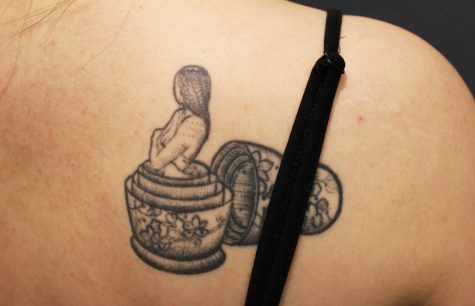
“I had a lot of tension with my dad,” Lu said. “In Chinese culture, if you’re younger, you just shut up and listen. It [can be] constraining because the younger person can’t say anything and it’s suffocating.”
Despite these constraints, Chinese culture has also influenced Lu’s art. He raised his hand from his side, stretched out his fingers and looked down at them in admiration.
“In Chinese culture, we place an emphasis on our hands,” Lu said. “The beauty of our hands. I’m proud of that.”
Zhang’s background also inspired her when she initially drew out the design of her second tattoo.
“I always grew up liking art and drew my own designs. I did it with ballpoint pen one day and my roommate was like, ‘Let’s go and get it tattooed,’” Zhang said. The night before, she had looked at tattoos of bamboo after deciding that she wanted a design reminiscent of her culture. Now, Zhang has a clean outline of a bamboo branch that extends from the middle of her left arm to her collarbone.
When Ren was considering her first tattoo, she wanted to get one that she wouldn’t regret. As she started reminiscing about the experience, Ren rolled up her left pant leg to reveal the design tattooed on the back of her calf. She had come up with a design related to her family by converting her father’s birthday into Roman numerals.
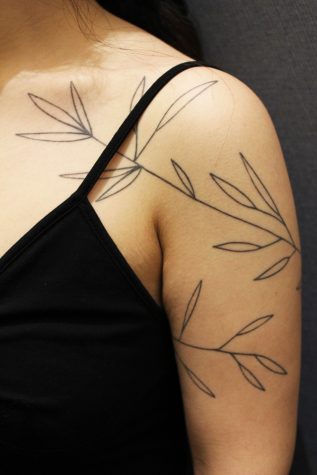
“It was pretty conflicting,” Ren said. “My parents probably consider it rebellious. On the other hand, I’m getting one related to my family. For me, I just wanted to get a tattoo that’s really meaningful.”
Chiang finds a personal meaning by getting deeply interested in researching specific cultures. Her cultural background has given her the incentive to explore not only her own roots through art.
“[Tattooing has] allowed me to bridge gaps, which is a huge part of being [an] immigrant and second generation living in a place like New York City,” Chiang said.
Chiang is still developing her style, which consists of predominantly black and white mythological and metaphysical concepts. “I have such a big love for the larger pieces,” Chiang said. “I feel they have so much more life and room to breathe.”
Fu also has a preference for these larger tattoo pieces and dislikes smaller tattoos that are, in her words, too soft and girly. She is taking a stand against the predisposition of what a Chinese woman should look like.
“Chinese people still think women with tattoos are ‘bad,’” she said. “Maybe if you get those small, thin, watercolor flower tattoos people would accept them, but if you have a spider tattoo like me, people would automatically consider you troublesome and rebellious.”
While there is a long way to go in making tattoos more acceptable in Chinese households, these students and tattoo artists are taking steps in changing the narrative by showing how art, ink and needles can come together to create something beautiful.
Email Emma Li at [email protected].











































































